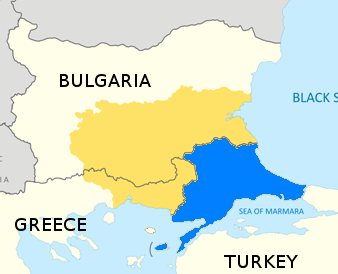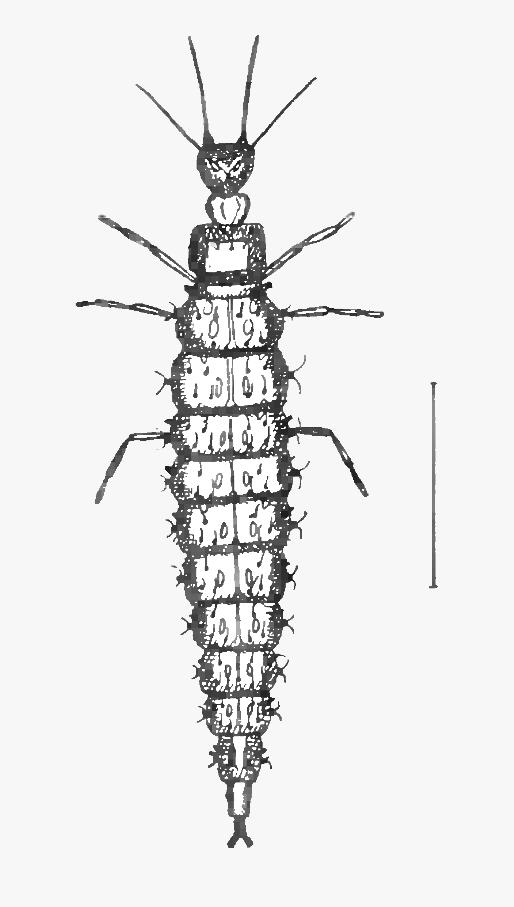|
Nemoptera Coa
''Nemoptera coa'', sometimes referred to as the Grecian streamertail, is a species of lacewing within the family Nemopteridae, the spoonwing family. ''N. coa'' is native to Greece and East Thrace East Thrace or Eastern Thrace ( tr, Doğu Trakya or simply ''Trakya''; el, Ανατολική Θράκη, ''Anatoliki Thraki''; bg, Източна Тракия, ''Iztochna Trakiya''), also known as Turkish Thrace or European Turkey, is the pa .... There have been instances of individuals within Muğla Province within Turkey as well. Individuals are often found in xeric Mediterranean phrygana as well as grasslands. ''N. coa'' individuals display activity during the daytime. References External links * {{Taxonbar, from=Q2640165 Neuroptera of Europe Neuroptera Insects described in 1758 Taxa named by Carl Linnaeus ... [...More Info...] [...Related Items...] OR: [Wikipedia] [Google] [Baidu] |
Carolus Linnaeus
Carl Linnaeus (; 23 May 1707 – 10 January 1778), also known after his Nobility#Ennoblement, ennoblement in 1761 as Carl von Linné#Blunt, Blunt (2004), p. 171. (), was a Swedish botanist, zoologist, taxonomist, and physician who formalised binomial nomenclature, the modern system of naming organisms. He is known as the "father of modern Taxonomy (biology), taxonomy". Many of his writings were in Latin; his name is rendered in Latin as and, after his 1761 ennoblement, as . Linnaeus was born in Råshult, the countryside of Småland, in southern Sweden. He received most of his higher education at Uppsala University and began giving lectures in botany there in 1730. He lived abroad between 1735 and 1738, where he studied and also published the first edition of his ' in the Netherlands. He then returned to Sweden where he became professor of medicine and botany at Uppsala. In the 1740s, he was sent on several journeys through Sweden to find and classify plants and animals. In ... [...More Info...] [...Related Items...] OR: [Wikipedia] [Google] [Baidu] |
Nemopteridae
Nemopteridae, the spoonwings, are a family of neuropteran insects. They are also called thread-winged antlions. They are found in the Ethiopian, Palearctic, Australasian and Neotropical realms but absent in North America (though a fossil has been found in Colorado).Grzimek's Animal Life Encyclopedia, 2nd edition. Volume 3, Insects, edited by Michael Hutchins, Arthur V. Evans, Rosser W. Garrison, and Neil Schlager. Farmington Hills, MI: Gale Group, 2003. Their flight is delicate and they have a circling flight to avoid walls when they are trapped indoors. The long streamer is conspicuous when the insects are flying and these are the elongated and spatulate hindwings. Male nemopterids have a bulla on the wing usually along the margin or wing base that is used to disperse pheromone. Taxonomy There are two distinct subfamilies in the family Nemopteridae: *Subfamily Crocinae, mostly nocturnal and crepuscular species with often a narrow habitat preference. They are found in arid d ... [...More Info...] [...Related Items...] OR: [Wikipedia] [Google] [Baidu] |
GBIF
The Global Biodiversity Information Facility (GBIF) is an international organisation that focuses on making scientific data on biodiversity available via the Internet using web services. The data are provided by many institutions from around the world; GBIF's information architecture makes these data accessible and searchable through a single portal. Data available through the GBIF portal are primarily distribution data on plants, animals, fungi, and microbes for the world, and scientific names data. The mission of the GBIF is to facilitate free and open access to biodiversity data worldwide to underpin sustainable development. Priorities, with an emphasis on promoting participation and working through partners, include mobilising biodiversity data, developing protocols and standards to ensure scientific integrity and interoperability, building an informatics architecture to allow the interlinking of diverse data types from disparate sources, promoting capacity building and catal ... [...More Info...] [...Related Items...] OR: [Wikipedia] [Google] [Baidu] |
National Center For Biotechnology Information
The National Center for Biotechnology Information (NCBI) is part of the United States National Library of Medicine (NLM), a branch of the National Institutes of Health (NIH). It is approved and funded by the government of the United States. The NCBI is located in Bethesda, Maryland, and was founded in 1988 through legislation sponsored by US Congressman Claude Pepper. The NCBI houses a series of databases relevant to biotechnology and biomedicine and is an important resource for bioinformatics tools and services. Major databases include GenBank for DNA sequences and PubMed, a bibliographic database for biomedical literature. Other databases include the NCBI Epigenomics database. All these databases are available online through the Entrez search engine. NCBI was directed by David Lipman, one of the original authors of the BLAST sequence alignment program and a widely respected figure in bioinformatics. GenBank NCBI had responsibility for making available the GenBank DNA seque ... [...More Info...] [...Related Items...] OR: [Wikipedia] [Google] [Baidu] |
Greece
Greece,, or , romanized: ', officially the Hellenic Republic, is a country in Southeast Europe. It is situated on the southern tip of the Balkans, and is located at the crossroads of Europe, Asia, and Africa. Greece shares land borders with Albania to the northwest, North Macedonia and Bulgaria to the north, and Turkey to the northeast. The Aegean Sea lies to the east of the Geography of Greece, mainland, the Ionian Sea to the west, and the Sea of Crete and the Mediterranean Sea to the south. Greece has the longest coastline on the Mediterranean Basin, featuring List of islands of Greece, thousands of islands. The country consists of nine Geographic regions of Greece, traditional geographic regions, and has a population of approximately 10.4 million. Athens is the nation's capital and List of cities and towns in Greece, largest city, followed by Thessaloniki and Patras. Greece is considered the cradle of Western culture, Western civilization, being the birthplace of Athenian ... [...More Info...] [...Related Items...] OR: [Wikipedia] [Google] [Baidu] |
East Thrace
East Thrace or Eastern Thrace ( tr, Doğu Trakya or simply ''Trakya''; el, Ανατολική Θράκη, ''Anatoliki Thraki''; bg, Източна Тракия, ''Iztochna Trakiya''), also known as Turkish Thrace or European Turkey, is the part of Turkey that is geographically a part of Southeast Europe. It accounts for 3.4% of Turkey's land area but comprises 15% of its total population. The largest city of the region is Istanbul, which straddles the Bosporus between Europe and Asia. East Thrace is of historic importance as it is next to a major sea trade corridor and constitutes what remains of the once-vast Ottoman Empire, Ottoman region of Rumelia. It is currently also of specific geostrategy, geostrategic importance because the sea corridor, which includes two narrow straits, provides access to the Mediterranean Sea from the Black Sea for the navies of five countries: Russia, Ukraine, Romania, Bulgaria, and Georgia (country), Georgia. The region also serves as a future con ... [...More Info...] [...Related Items...] OR: [Wikipedia] [Google] [Baidu] |
Muğla Province
Muğla Province ( tr, , ) is a province of Turkey, at the country's south-western corner, on the Aegean Sea. Its seat is Muğla, about inland, while some of Turkey's largest holiday resorts, such as Bodrum, Ölüdeniz, Marmaris and Fethiye, are on the coast in Muğla. Etymology The original name of Muğla is open to debate. Various sources refer to the city as Mogola, Mobella or Mobolia. Geography At , Muğla's coastline is the longest among the Provinces of Turkey and longer than many countries' coastlines, (even without taking any small islands into account). Important is the Datça Peninsula. As well as the sea, Muğla has two large lakes, Lake Bafa in the district of Milas and Lake Köyceğiz. The landscape consists of pot-shaped small plains surrounded by mountains, formed by depressions in the Neogene. These include the plain of the city of Muğla itself, Yeşilyurt, Ula, Gülağzı, Yerkesik, Akkaya, and Yenice). Until the recent building of highways, transport fr ... [...More Info...] [...Related Items...] OR: [Wikipedia] [Google] [Baidu] |
Neuroptera Of Europe
The insect order Neuroptera, or net-winged insects, includes the lacewings, mantidflies, antlions, and their relatives. The order consists of some 6,000 species. Neuroptera can be grouped together with the Megaloptera and Raphidioptera in the unranked taxon Neuropterida (once known as Planipennia) including: alderflies, fishflies, dobsonflies, and snakeflies. Adult Neuropterans have four membranous wings, all about the same size, with many veins. They have chewing mouthparts, and undergo complete metamorphosis. Neuropterans first appeared during the Permian period, and continued to diversify through the Mesozoic era. During this time, several unusually large forms evolved, especially in the extinct family Kalligrammatidae, often called "the butterflies of the Jurassic" for their large, patterned wings. Anatomy and biology Neuropterans are soft-bodied insects with relatively few specialized features. They have large lateral compound eyes, and may or may not also have ... [...More Info...] [...Related Items...] OR: [Wikipedia] [Google] [Baidu] |
Neuroptera
The insect order Neuroptera, or net-winged insects, includes the lacewings, mantidflies, antlions, and their relatives. The order consists of some 6,000 species. Neuroptera can be grouped together with the Megaloptera and Raphidioptera in the unranked taxon Neuropterida (once known as Planipennia) including: alderflies, fishflies, dobsonflies, and snakeflies. Adult Neuropterans have four membranous wings, all about the same size, with many veins. They have chewing mouthparts, and undergo complete metamorphosis. Neuropterans first appeared during the Permian period, and continued to diversify through the Mesozoic era. During this time, several unusually large forms evolved, especially in the extinct family Kalligrammatidae, often called "the butterflies of the Jurassic" for their large, patterned wings. Anatomy and biology Neuropterans are soft-bodied insects with relatively few specialized features. They have large lateral compound eyes, and may or may not also have oce ... [...More Info...] [...Related Items...] OR: [Wikipedia] [Google] [Baidu] |
Insects Described In 1758
Insects (from Latin ') are pancrustacean hexapod invertebrates of the class Insecta. They are the largest group within the arthropod phylum. Insects have a chitinous exoskeleton, a three-part body (head, thorax and abdomen), three pairs of jointed legs, compound eyes and one pair of antennae. Their blood is not totally contained in vessels; some circulates in an open cavity known as the haemocoel. Insects are the most diverse group of animals; they include more than a million described species and represent more than half of all known living organisms. The total number of extant species is estimated at between six and ten million; In: potentially over 90% of the animal life forms on Earth are insects. Insects may be found in nearly all environments, although only a small number of species reside in the oceans, which are dominated by another arthropod group, crustaceans, which recent research has indicated insects are nested within. Nearly all insects hatch from eggs. Inse ... [...More Info...] [...Related Items...] OR: [Wikipedia] [Google] [Baidu] |

_PSM_V73_D129.png)


.jpg)


